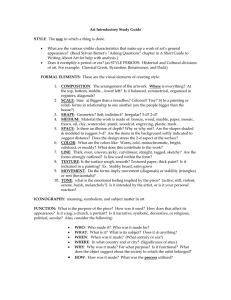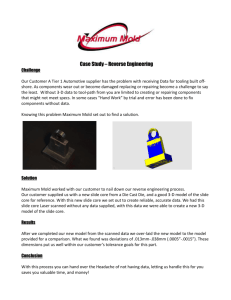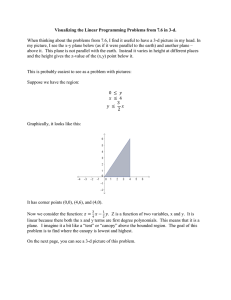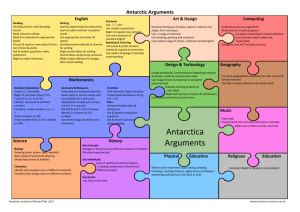Three-Dimensional Computer Vision Oscar Firschein
advertisement
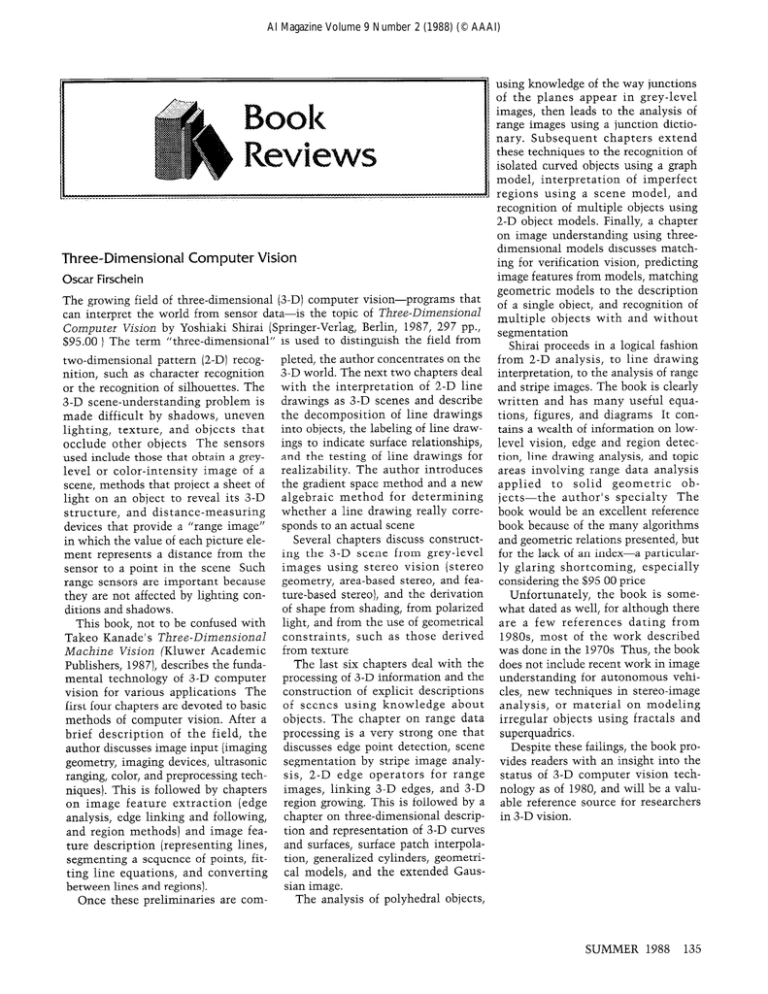
AI Magazine Volume 9 Number 2 (1988) (© AAAI) Three-Dimensional Computer Vision Oscar Firschein The growing field of three-dimensional (3-D) computer vision-programs that can interpret the world from sensor data-is the topic of Three-Dimensional Computer Vision by Yoshiaki Shirai (Springer-Verlag, Berlin, 1987, 297 pp., $95.00 ) The term “three-dimensional” is used to distinguish the field from two-dimensional pattern (2-D) recognition, such as character recognition or the recognition of silhouettes. The 3-D scene-understanding problem is made difficult by shadows, uneven lighting, texture, and objects that occlude other objects The sensors used include those that obtain a greylevel or color-intensity image of a scene, methods that project a sheet of light on an object to reveal its 3-D structure, and distance-measuring devices that provide a “range image” in which the value of each picture element represents a distance from the sensor to a point in the scene Such range sensors are important because they are not affected by lighting conditions and shadows. This book, not to be confused with Takeo Kanade’s Three-Dimensional Machine Vision (Kluwer Academic Publishers, 1987), describes the fundamental technology of 3-D computer vision for various applications The first four chapters are devoted to basic methods of computer vision. After a brief description of the field, the author discusses image input (imaging geometry, imaging devices, ultrasonic ranging, color, and preprocessing techniques). This is followed by chapters on image feature extraction (edge analysis, edge linking and following, and region methods) and image feature description (representing lines, segmenting a sequence of points, fitting line equations, and converting between lines and regions). Once these preliminaries are com- pleted, the author concentrates on the 3-D world. The next two chapters deal with the interpretation of 2-D line drawings as 3-D scenes and describe the decomposition of line drawings into objects, the labeling of line drawings to indicate surface relationships, and the testing of line drawings for realizability. The author introduces the gradient space method and a new algebraic method for determining whether a line drawing really corresponds to an actual scene Several chapters discuss constructing the 3-D scene from grey-level images using stereo vision (stereo geometry, area-based stereo, and feature-based stereo), and the derivation of shape from shading, from polarized light, and from the use of geometrical constraints, such as those derived from texture The last six chapters deal with the processing of 3-D information and the construction of explicit descriptions of scenes using knowledge about objects. The chapter on range data processing is a very strong one that discusses edge point detection, scene segmentation by stripe image analysis, 2-D edge operators for range images, linking 3-D edges, and 3-D region growing. This is followed by a chapter on three-dimensional description and representation of 3-D curves and surfaces, surface patch interpolation, generalized cylinders, geometrical models, and the extended Gaussian image. The analysis of polyhedral objects, using knowledge of the way junctions of the planes appear in grey-level images, then leads to the analysis of range images using a junction dictionary. Subsequent chapters extend these techniques to the recognition of isolated curved objects using a graph model, interpretation of imperfect regions using a scene model, and recognition of multiple objects using Z-D object models. Finally, a chapter on image understanding using threedimensional models discusses matching for verification vision, predicting image features from models, matching geometric models to the description of a single obiect, and recognition of multiple objects with and without segmentation Shirai proceeds in a logical fashion from 2-D analysis, to line drawing interpretation, to the analysis of range and stripe images. The book is clearly written and has many useful equations, figures, and diagrams It contains a wealth of information on lowlevel vision, edge and region detection, line drawing analysis, and topic areas involving range data analysis applied to solid geometric objects-the author’s specialty The book would be an excellent reference book because of the many algorithms and geometric relations presented, but for the lack of an index-a particularly glaring shortcoming, especially considering the $95 00 price Unfortunately, the book is somewhat dated as well, for although there are a few references dating from 198Os, most of the work described was done in the 1970s Thus, the book does not include recent work in image understanding for autonomous vehicles, new techniques in stereo-image analysis, or material on modeling irregular objects using fractals and superquadrics. Despite these failings, the book provides readers with an insight into the status of 3-D computer vision technology as of 1980, and will be a valuable reference source for researchers in 3-D vision. SUMMER 1988 135


